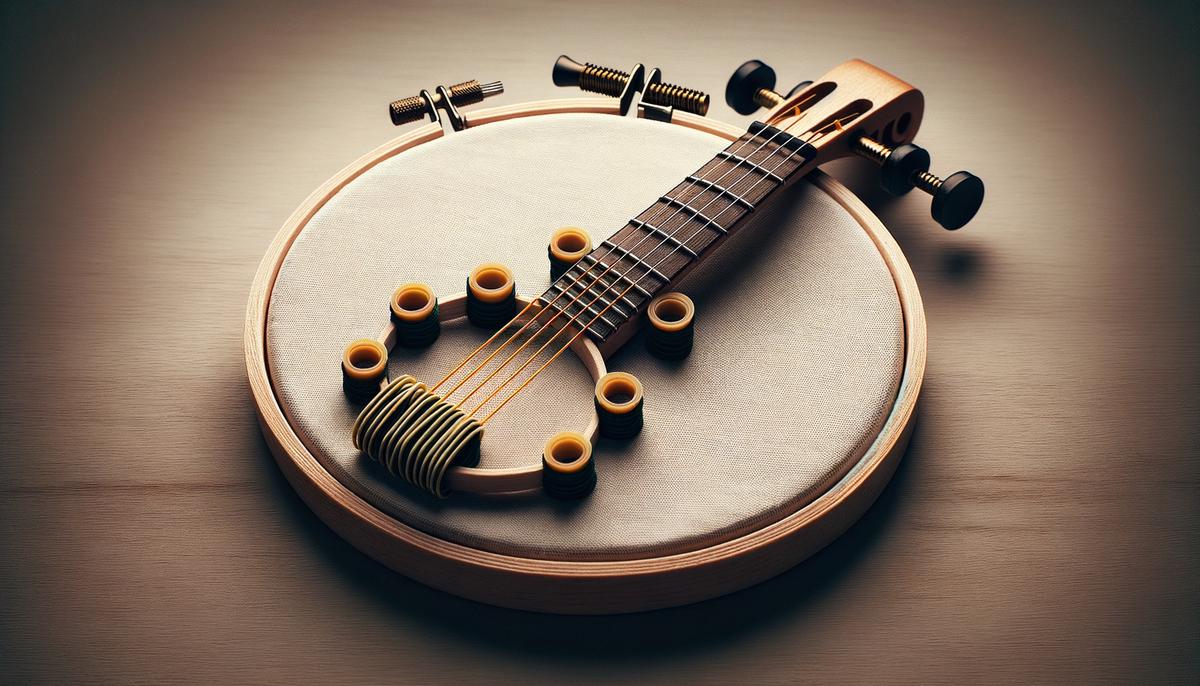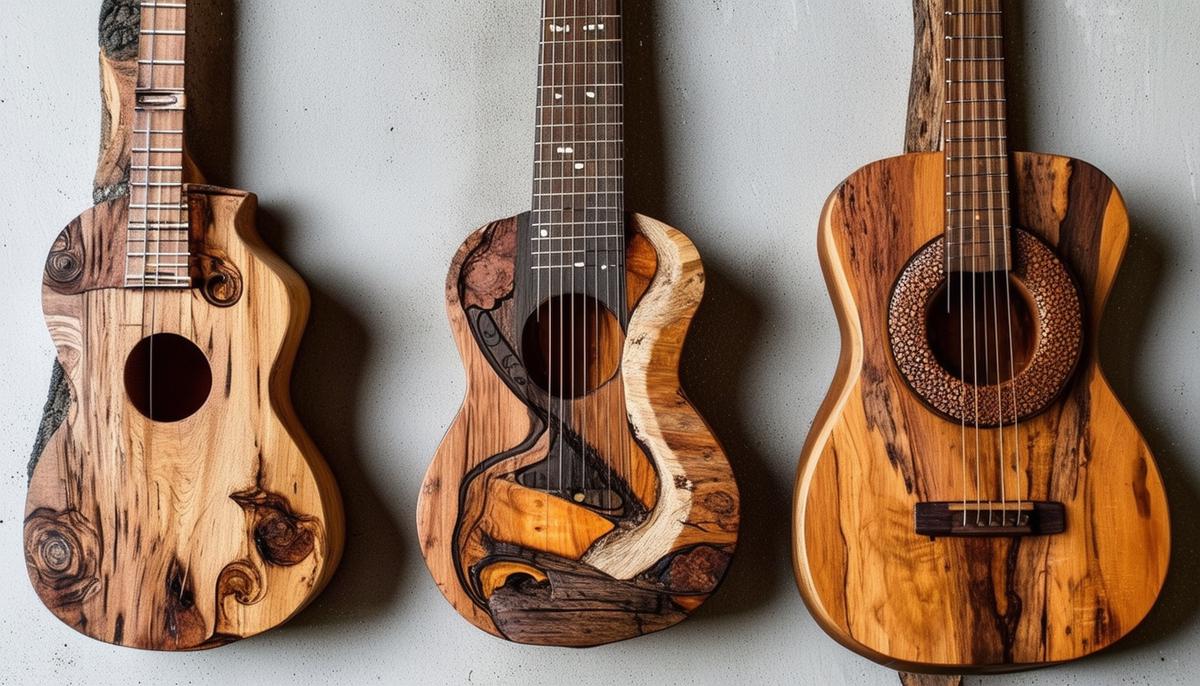Percussion Block
Sand all wooden pieces, progressing from rough to fine grit. Cut a flat wooden dowel into tiny slats matching the width of your main block. Sand the slat edges.
Paint the slats with your chosen colors. Secure each slat to doubled-sided tape on a paper bag for easier painting. Kids can help apply paint.
While paint dries, prepare the drumstick. Sand another dowel smooth and finish with Polycrylic to prevent splintering and improve grip.
Once slats are dry, attach them to the block using wood glue. Apply glue precisely with a toothpick or skewer. Allow ample drying time.
For better acoustics, consider hollowing out the block's back. Use a 5/8" drill bit carefully to create a small cavity.
Finish the block with Polycrylic for protection and shine.

Bell Shakers
- Start with wooden dowels. Mark three aligned holes in the top third of each dowel.
- Carefully drill through these marks.
- Paint the dowels, letting kids choose colors. After drying, apply Polycrylic Finish to protect the paint.
- Thread pipe cleaners through the holes. Attach a bell to each, twisting the pipe cleaner end to secure.
- Trim excess pipe cleaner and twist ends neatly.
- Check that everything is secure and the finish has dried completely.

Mini Mandolins
Gather embroidery hoops and rubber bands. Wrap rubber bands around the inner hoop, perpendicular to the outer hoop's screw. Use at least four bands for a good range of notes.
Place the inner hoop inside the outer one. Tighten the screw to secure the bands, ensuring they're taut but not overly tight.
Apply Polycrylic Finish with a foam brush for durability. Let it dry completely.
Once dry, place it flat and pluck the rubber bands. Encourage kids to explore different playing techniques.

Upcycling Materials
Explore upcycling defective and scrap wood from old instruments to create new ones. This approach combines sustainability with unique character.
- Select structurally sound pieces with interesting marks or shapes.
- Sand thoroughly to prepare surfaces and assess quality.
- Design your new instrument based on the available pieces.
- Cut the wood to size precisely.
- Join pieces using wood glue, ensuring snug, secure fits.
- Clamp while drying for strong bonds.
After assembly, sand joints and edges smooth. Add necks and fretboards to stringed instruments, focusing on precision for playability and sound quality.
Seal and protect your instrument with Polycrylic, applying evenly with a foam brush.
Fine-tune for optimal sound quality, adjusting string tension or plucking techniques as needed.

Empathy and Craft
Creating musical instruments from reclaimed wood, such as that from migrant ships, goes beyond the final product. It's about the stories within each piece and the empathy it generates.
Examine the reclaimed wood closely. Note its grain and markings, understanding that these features are part of its history. Sand carefully, smoothing rough edges while preserving some texture.
As you shape and assemble pieces, reflect on the embedded stories. This mindfulness transforms the process into a meditative experience.
"Joining pieces symbolizes reclaiming strength and wholeness. Finishing touches elevate the instrument to art."
Polycrylic Finish protects and highlights the wood's beauty.
The instrument's sound carries its origins. Unique tonal qualities speak of its past and resonate with redemption. Tuning requires patience but leads to harmony.
This crafting process can be therapeutic, allowing reflection on loss, hope, and renewal. It's a tangible expression of empathy, with each note resonating shared humanity.

By transforming reclaimed wood into musical instruments, we create more than just sound. Each piece carries a story of resilience and hope, reminding us that beauty can emerge from challenging circumstances.
- Pramberg J, Kuskoff E. The power of music: Using songs to support people experiencing homelessness. Br J Soc Work. 2021;51(4):1361-1378.
- Krout RE. Music therapy with imminently dying hospice patients and their families: Facilitating release near the time of death. Am J Hosp Palliat Care. 2003;20(2):129-134.
- Stige B. Where music helps: Community music therapy in action and reflection. Ashgate Publishing, Ltd.; 2010.
